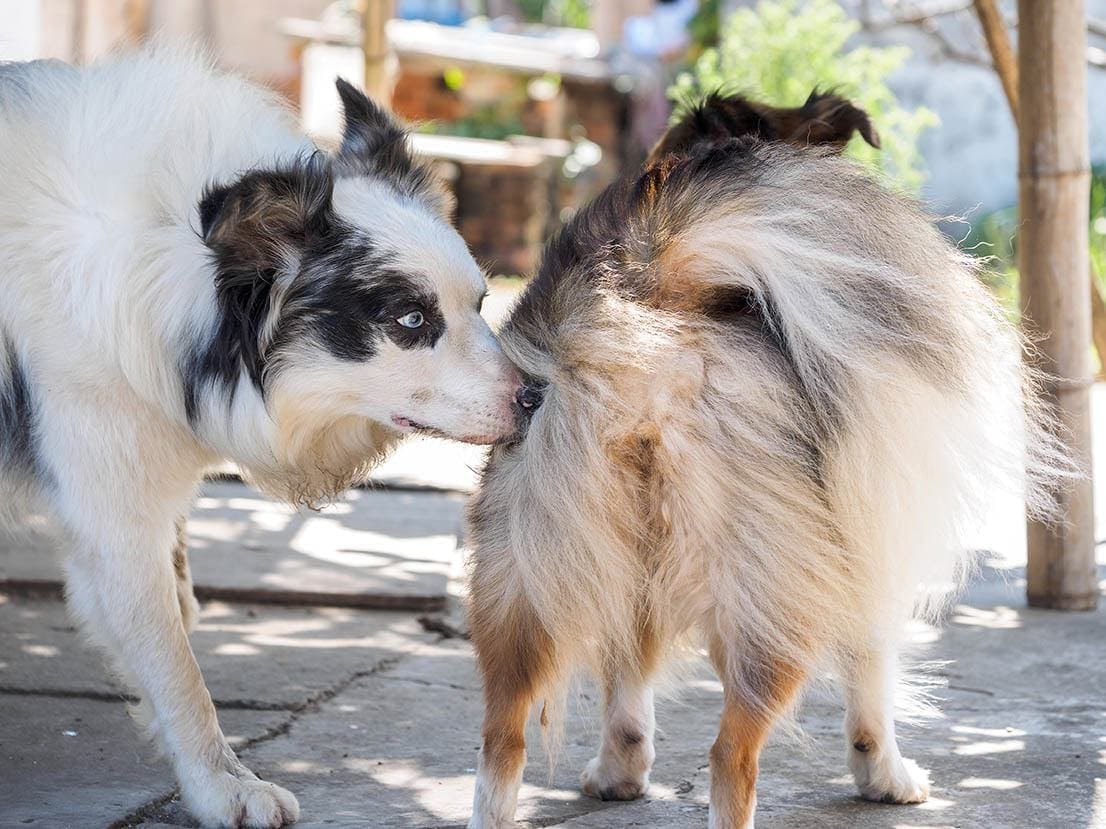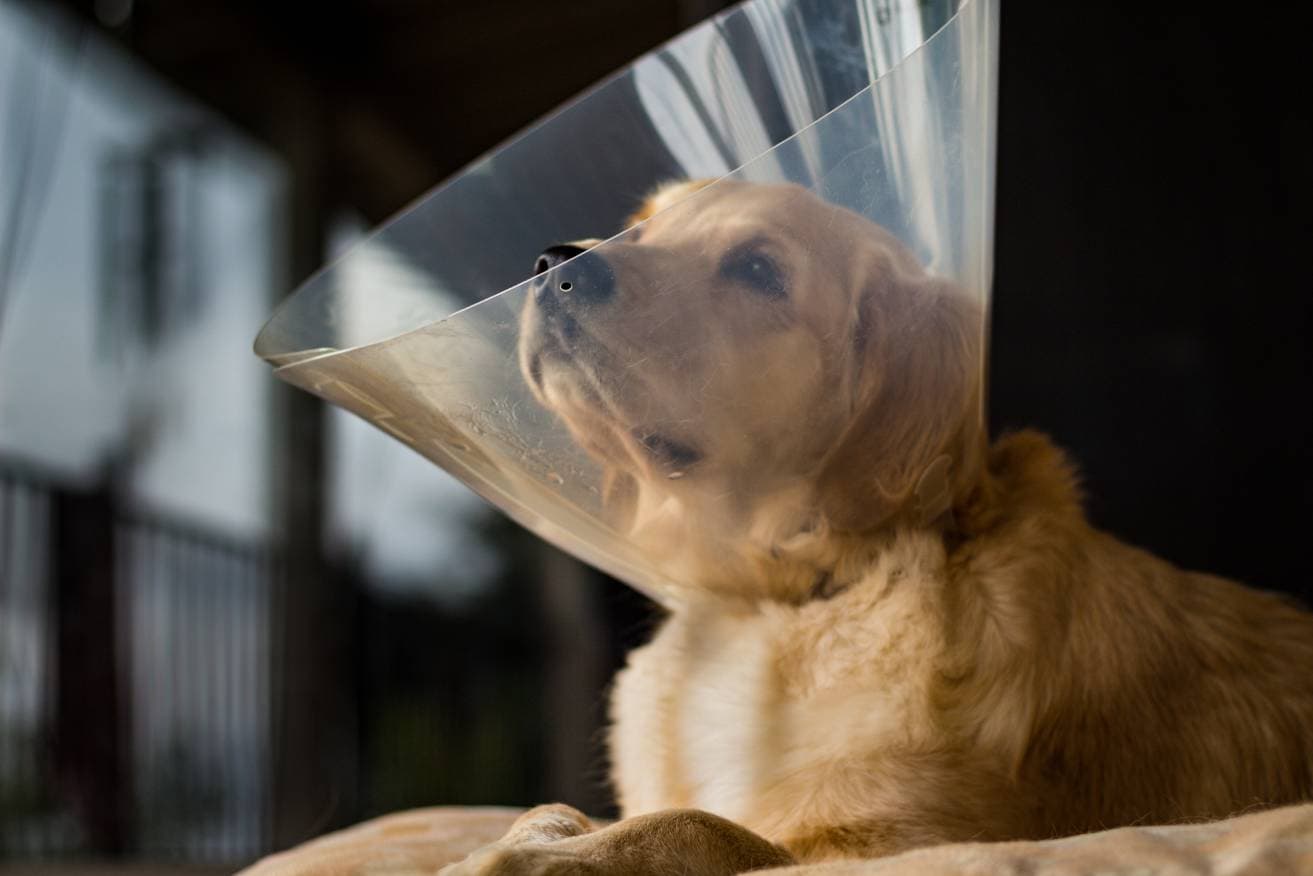
You may be familiar with the fact that female dogs are “on heat” or “in season” around twice a year, and during this time they will bleed from their vulva. But is this the same as having a period? You might be surprised to learn that the answer is no, dogs do not have periods.
Dogs do not have periods the same way humans do—their cycle works a bit differently. They have a cycle known as estrus, which usually occurs every 6 months, although some breeds only have one heat cycle per year. During this heat cycle, dogs will experience hormonal changes that make them ready to mate, and this is when they experience a swollen vulva and bloody discharge.
This is not the same as menstruation. In humans, the uterus builds up a thickened lining in preparation for a potential pregnancy, over approximately 21 days. Following ovulation, if no pregnancy has occurred, this uterine lining breaks down and is expelled over a period of 3-5 days.
During canine estrus, blood flow and mucus production in the vaginal walls increases, and this is where the discharge comes from. Hormonal fluctuations may make some dogs more affectionate or more irritable during this time. Estrus is the time when they are most fertile, so they must be kept away from entire male dogs to avoid any unwanted litters. Estrus lasts, on average, around 7-9 days, but can be as short as 4-5 days, or as long as 14-21 days!
How Long Do Female Dogs Bleed for?
Female dogs start to bleed towards the end of the first stage of their season, called proestrus. This lasts about 9 days on average, but it depends largely on the dog. Some dogs will have longer “bleeds,” while others will have shorter ones.
This bleeding can vary in amount and color, from heavy to light. Usually, the bleeding isn’t serious, though you may need to have your dog wear a diaper or enclose her in one portion of the house to prevent messes. Dogs may continue to have very light discharge after these 9 days. In total, the whole heat cycle lasts about 3 weeks, but, dogs will not usually bleed this whole time.

Why Do Female Dogs Bleed in Heat?
Female dogs bleed in heat due to hormonal changes that increase the blood flow to their reproductive organs. This bleeding isn’t caused by the shedding of the uterine lining like it is in humans. Instead, the increased blood flow leads to a bloody discharge.
The bleeding varies in color and amount. It may be bright red or pink. It can be light to heavy, and usually changes over the course of the cycle. As proestrus transitions into estrus, the female dog becomes receptive to mating, and the discharge usually becomes thinner and less bloody, which is when ovulation occurs.
Do Dogs Still Bleed After Being Spayed?
Dogs no longer experience a reproductive cycle after being spayed, so they no longer bleed (or have any other symptoms). However, they may bleed a little bit directly after being spayed due to the blood left over from the surgery as it takes time for this blood to exit the body. This kind of bleeding should be minimal, though. It may last for only a few days and shouldn’t occur again.
In rare cases, dogs may get ovarian remnant syndrome. If there is any ovarian tissue left behind after being spayed, the dog may still have enough hormone production to have a heat cycle. This sort of bleeding will follow the same pattern as their normal heat cycle. In most cases of ovarian remnant syndrome, however, enough of the internal structure has been removed during surgery that there are often only external signs such as vulval swelling, and bleeding is either minimal or absent. However, if only the ovaries were removed, as is usually the case in laparoscopic spay surgery, they will not only have normal bleeding, but they may even be able to become pregnant if enough ovarian tissue remains.
If your dog ends up with this condition, they may require further surgery to remove the ovarian tissue. If your dog still has a heat cycle after being spayed, you should contact your vet as this is not normal.

Do Dogs Notice Human Periods?
Dogs have a very keen sense of smell and can detect many scents and pheromones. Therefore, dogs can likely notice when a human is menstruating. However, we cannot know with certainty if dogs can truly detect periods, or how they may interpret them.
Dogs may react differently to the scent; some may not seem to notice it at all, while others may make a big deal out of it. Temperament differences and socialization likely play a role, and whether they are entire or spayed/neutered may also factor into their reactions. Some dogs may become very attentive or protective, others may avoid the person or even show increased signs of aggression. Some dogs may seem agitated by the scent or overly anxious.
When Do Dogs Have Their First Heat?
Dogs get their first heat when they reach sexual maturity, which will depend on breed and size; small dogs tend to have their first season at the age of 6-7 months, while large or giant breeds may not have their first season until they are around 18 months old.
The first heat is exactly like all others, although some individuals may show more subtle external signs. Dogs can get pregnant during their first season, however, it isn’t recommended. Most dogs reach sexual maturity before they are fully grown, so it’s vital that you keep your female away from male dogs during this time

What About Spaying?
It is typically recommended that you spay your dog after her first heat. There is absolutely no evidence that dogs need to have a litter of puppies for health or socialization purposes, but there is strong evidence to show that spaying before their second season significantly reduces the risk of mammary cell tumors, and completely eliminates the risk of uterine infection (pyometra).
There is an even greater reduction of mammary cancer risk in females spayed before their first season, however, there are other health implications of spaying before they have reached sexual maturity, such as estrogen-responsive urinary incontinence.
Dogs should not be spayed whilst they are in season as the enlarged blood vessels of the reproductive tract increase the risk of hemorrhage. There may also be problems associated with interrupting the reproductive cycle whilst the hormones are in flux. Ideally, spaying should occur between 1-3 months after all signs of their season have settled, and up to 1 month before they are due to have another one.
Sometimes dogs can have a “phantom pregnancy”, which is where the hormones are behaving as though a pregnancy has occurred. Spaying during a phantom pregnancy should also be avoided to avoid causing hormonal issues.
Final Thoughts
Dogs do not have periods as humans do. Although they bleed during their reproductive cycle, they do this for a different reason than humans. It’s simply due to the increased blood flow, not because they are shedding their uterine lining. Their bleeding levels can differ a lot. Some dogs hardly bleed at all, while others bleed a lot, which is one way that canine estrus is similar to human menstruation!
Often, the bleeding lasts for around 7 to 12 days, though this can vary a lot, as can their window of fertility.
It’s important to segregate your female from other dogs when they are in season, especially entire males. Dogs can become pregnant on their very first heat, and every cycle after that. Unless you’re planning on breeding your female, don’t leave her outside unattended during this time, and ideally spay her between her first and second season.
Featured Image Credit: tsik, Shutterstock







